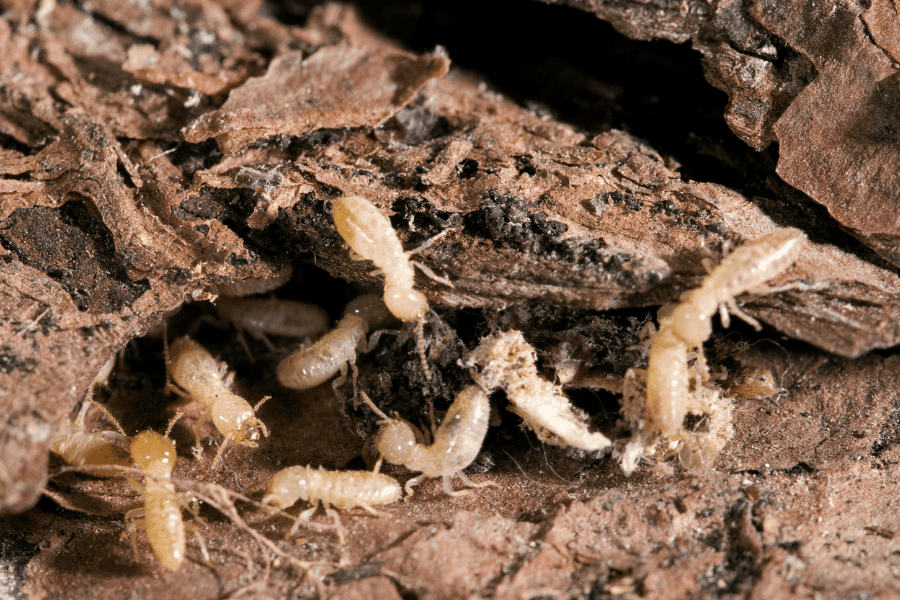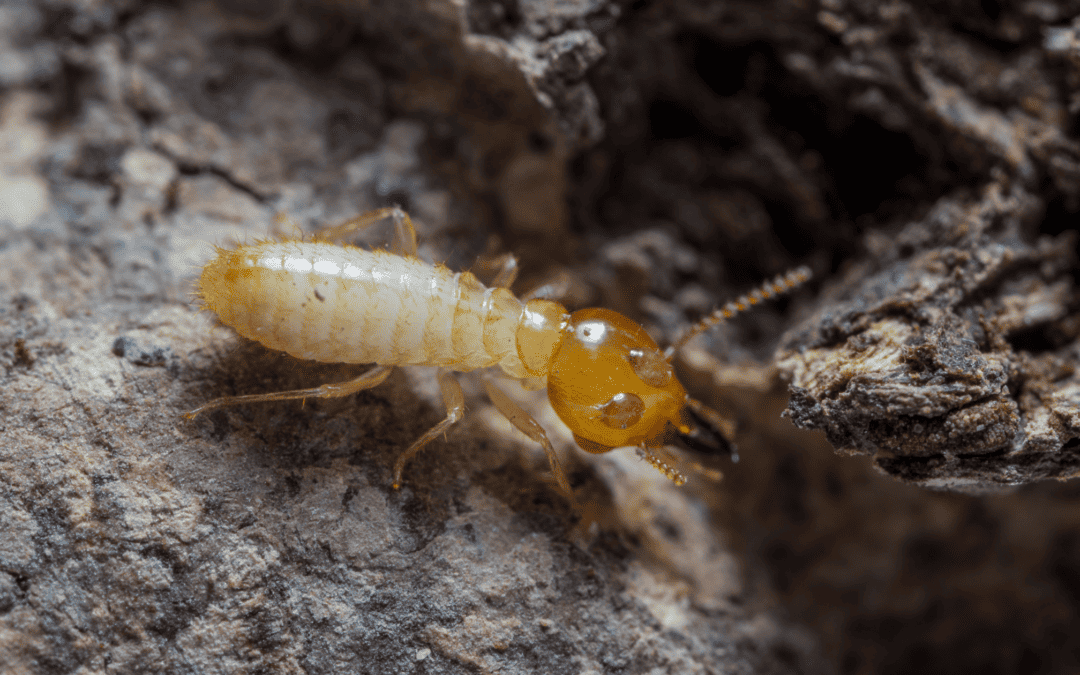READY TO GET STARTED?
REQUEST A FREE ESTIMATE
Fill out the form below or call (888) 466-7849 for a free, no-obligation estimate.

Subterranean termites are a significant concern for homeowners in Georgia, causing extensive damage to wooden structures if left untreated. Understanding how to identify these pests, recognizing the signs of an infestation, and knowing the various treatment options available are crucial steps in protecting your home. In this blog, we will explore what subterranean termites look like, the signs of their presence, the best treatments for eliminating them, and essential prevention tips to keep your home termite-free.
Subterranean termites are small, creamy-white to dark brown insects, typically about 1/8 to 3/8 inch long. They have soft bodies and are often mistaken for ants, though they can be distinguished by their straight antennae, uniform waists, and wings of equal length when swarming. Identifying these termites correctly is the first step in implementing effective termite control.
Recognizing the signs of a subterranean termite infestation early can save homeowners from extensive and costly repairs. Key indicators include:
There are several effective treatments for subterranean termites, each with its benefits and considerations. Here are the most commonly used methods:
Preventing subterranean termites from invading your home is crucial. Here are some practical tips to keep these pests at bay:
Subterranean termites are a serious threat to homes in Georgia, but with the right knowledge and proactive measures, you can protect your property from these destructive pests. Identifying what subterranean termites look like, recognizing the signs of an infestation, and choosing the best treatment method are essential steps in effective termite control. Additionally, implementing preventive measures can help keep your home termite-free. If you suspect a termite infestation, contact a reputable termite control company to conduct a thorough inspection and recommend the best course of action.
By staying vigilant and informed, you can safeguard your home against the costly damage caused by termites.

There are two common termite species Florida homeowners should know: the subterranean and drywood termite. Both termite species can cause structural damage to homes and cause thousands of dollars in repairs. One of the best ways you can avoid their damage is understanding their characteristics and the preventative measures to place around your home to deter them away. Let’s explore the differences between drywood vs subterranean termites and how you keep them from infesting your home.
Drywood termites thrive in dry wood, often infesting furniture, frames, and other wooden structures without them needing contact with soil. Once they have infested, they will cause damage by hollowing out wood from the inside out. A good indication that these termites infested your home is finding small piles of wood pellets or frass, tiny holes in wood surfaces, and discarded wings near windowsills or light fixtures.
Subterranean termites live underground and build mud tubes to reach food sources above the ground, often destroying foundations and support beams in the process. These termites need soil and moisture to survive and build their colonies. Signs of a subterranean termite infestation include finding discarded wings and mud tubes on exterior walls, foundations, or crawlspaces.
There are several preventative measures you can utilize to deter termites away from your Florida property. Let’s review do-it-yourself termite prevention tips:
While these tips will support efforts to deter termites away, it is always best to schedule an annual termite inspection with a professional termite control company near you. These professionals can detect termite signs early and quickly provide your home with the appropriate termite control and prevention plan.


Termites can be a silent threat to the structural integrity of your home, and in Georgia, where the climate is conducive to termite activity, it’s essential to be proactive in termite control. In this blog post, we’ll explore how often you should treat for termites, common types of termites found in Georgia, signs of termite damage, the importance of annual inspections, preventive measures, and what to do if termites invade your home.
Georgia is home to several termite species, with the most common being subterranean termites, drywood termites, and Formosan termites. Each species poses unique challenges, making it crucial to understand their behavior for effective termite control.
Recognizing termite damage early is key to minimizing the impact on your home. Look out for hollow-sounding wood, mud tubes on exterior walls, discarded wings near windows and doors, and visible damage to wooden structures. If you notice any of these signs, it’s time to take action.
To stay ahead of potential termite infestations, annual inspections are a must. Professional termite control companies in Georgia offer thorough inspections to detect early signs of termite activity, providing peace of mind and safeguarding your investment.
Prevention is the first line of defense against termites. Keep woodpiles away from your home, ensure proper drainage to prevent water accumulation near the foundation, and seal any cracks or crevices in your home’s exterior. Additionally, consider opting for pressure-treated wood in construction projects.
Discovering termites in your home can be alarming, but swift action is crucial. Contact a reputable termite control company immediately. Professional pest control experts will assess the extent of the infestation, recommend a tailored treatment plan, and provide guidance on preventing future occurrences.
Protecting your home from termites requires a proactive approach. By understanding the types of termites, recognizing signs of damage, prioritizing annual inspections, implementing preventive measures, and seeking professional help when needed, you can ensure a termite-free living space. Take the first step in termite control – request a free quote and secure the longevity of your home.

Winter in Georgia may bring chilly temperatures, but for homeowners, it’s no time to let their guard down, especially when it comes to termite control. Contrary to popular belief, termites can remain active during the colder months, making it crucial to stay vigilant year-round. In this blog post, we’ll explore the types of termites found in Georgia, the concept of a termite season, signs of a termite infestation, and essential tips for prevention.
Georgia is home to several termite species, with the most common being Eastern Subterranean Termites, Formosan Subterranean Termites, and Drywood Termites. Each type poses its own set of challenges for homeowners, making termite control a necessity.
While many associate termite activity with warmer months, Georgia’s mild climate means that termites can remain active throughout the year. There might be a slight slowdown in winter, but it’s a mistake to assume that termites take a complete hiatus. In fact, their activity might even go unnoticed, making it crucial for homeowners to be proactive in their termite control efforts.
Detecting termite activity early is key to preventing extensive damage. Keep an eye out for the following signs:
Prevention is the best defense against termites. Here are some tips to protect your home:
Don’t wait until it’s too late. Safeguard your home from termite damage by requesting a free termite control quote from our experienced team. Our experts are ready to assess your property, identify potential risks, and implement effective termite control measures tailored to your needs.
In conclusion, termites in Georgia don’t take a winter vacation. Stay informed, remain vigilant, and take proactive steps to protect your home from these silent invaders. Contact a professional pest control company today for a comprehensive termite control solution and ensure your home stays termite-free year-round.